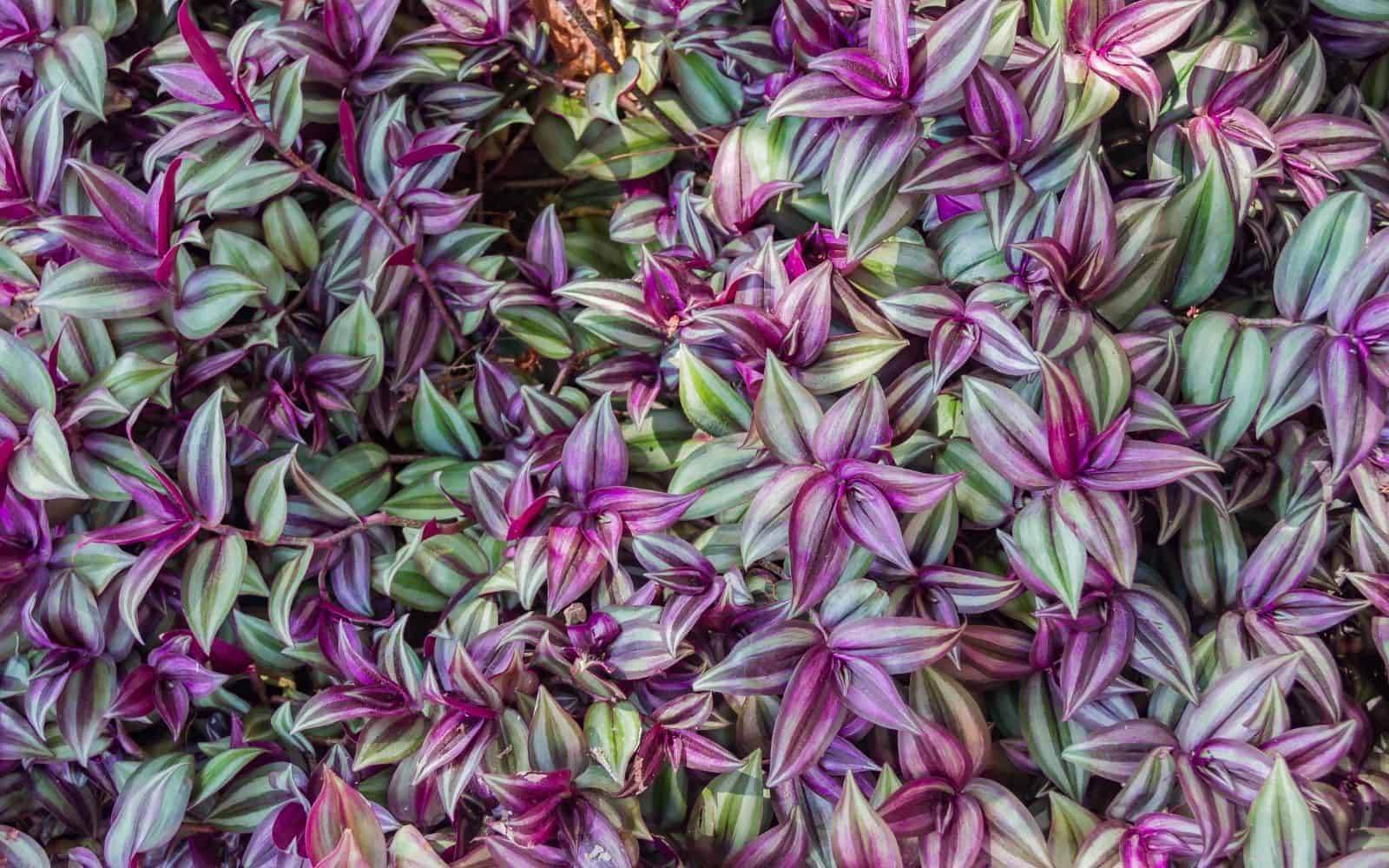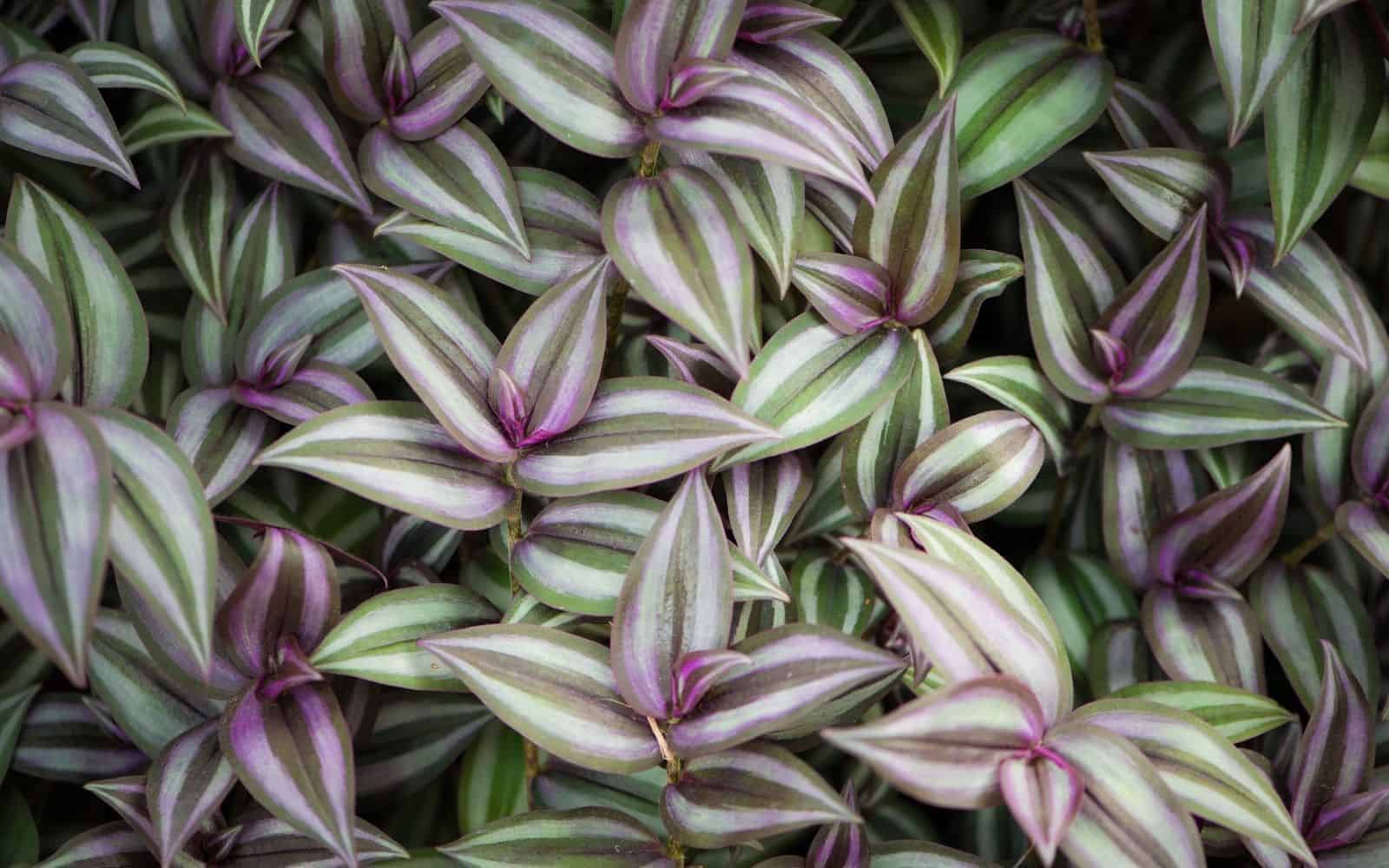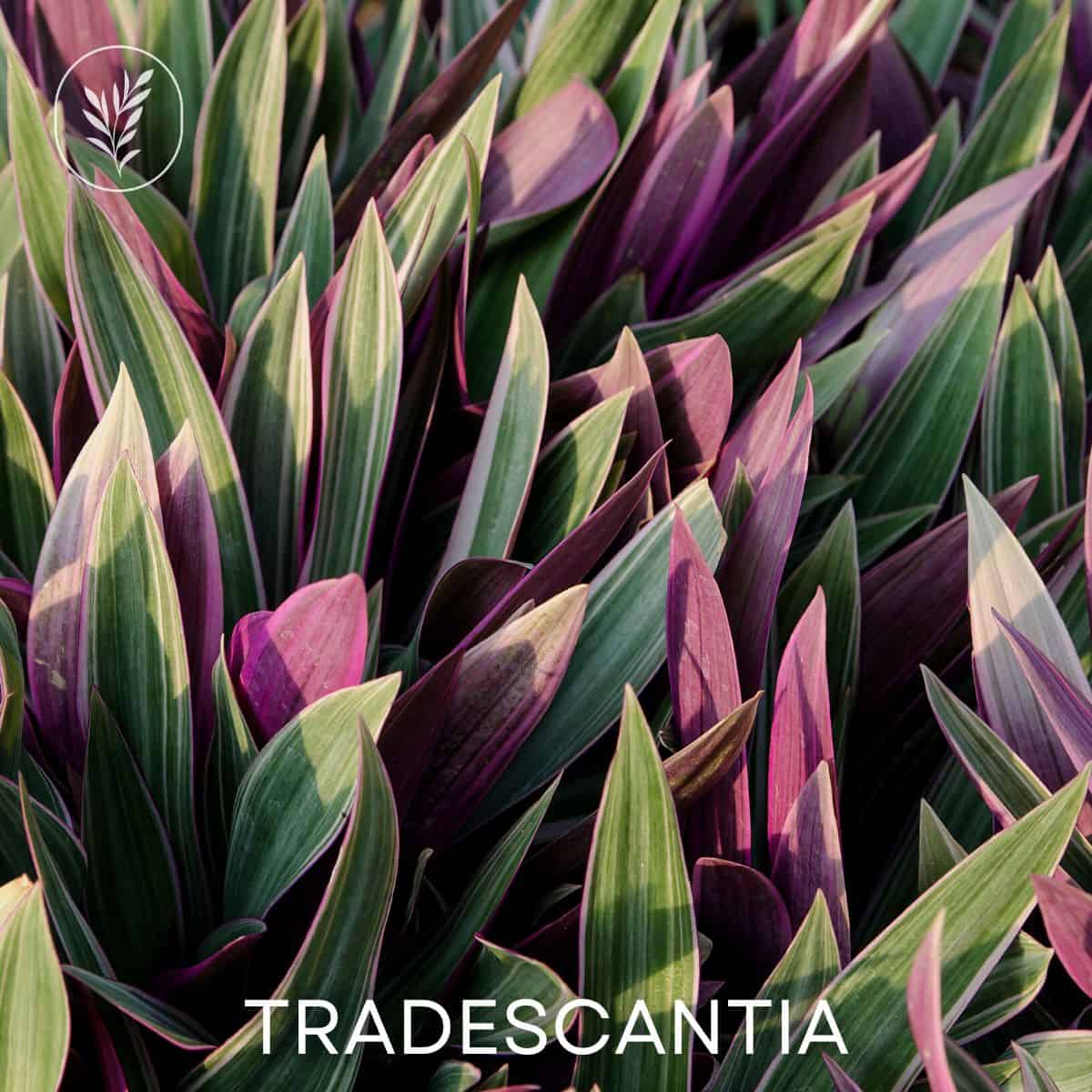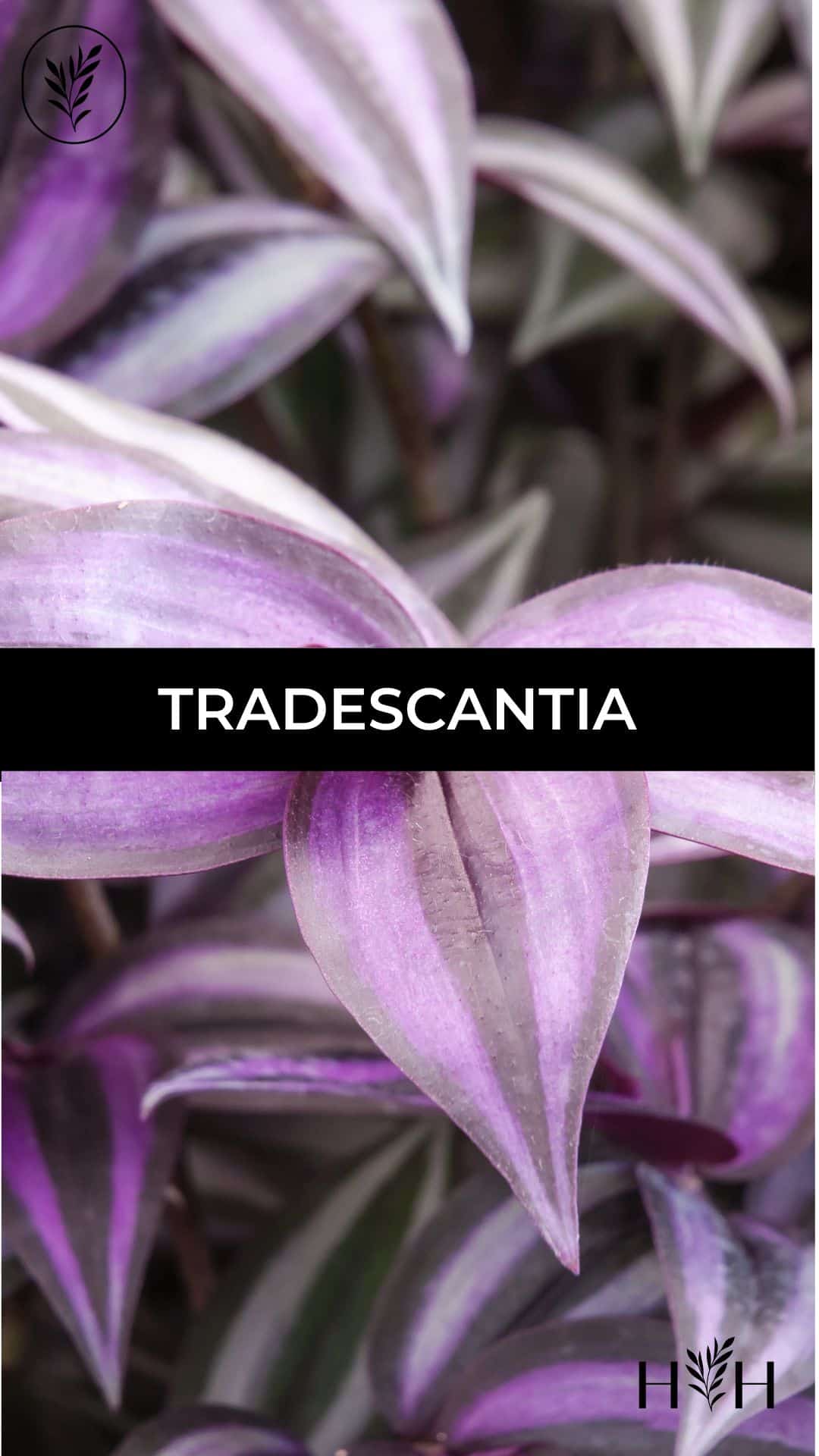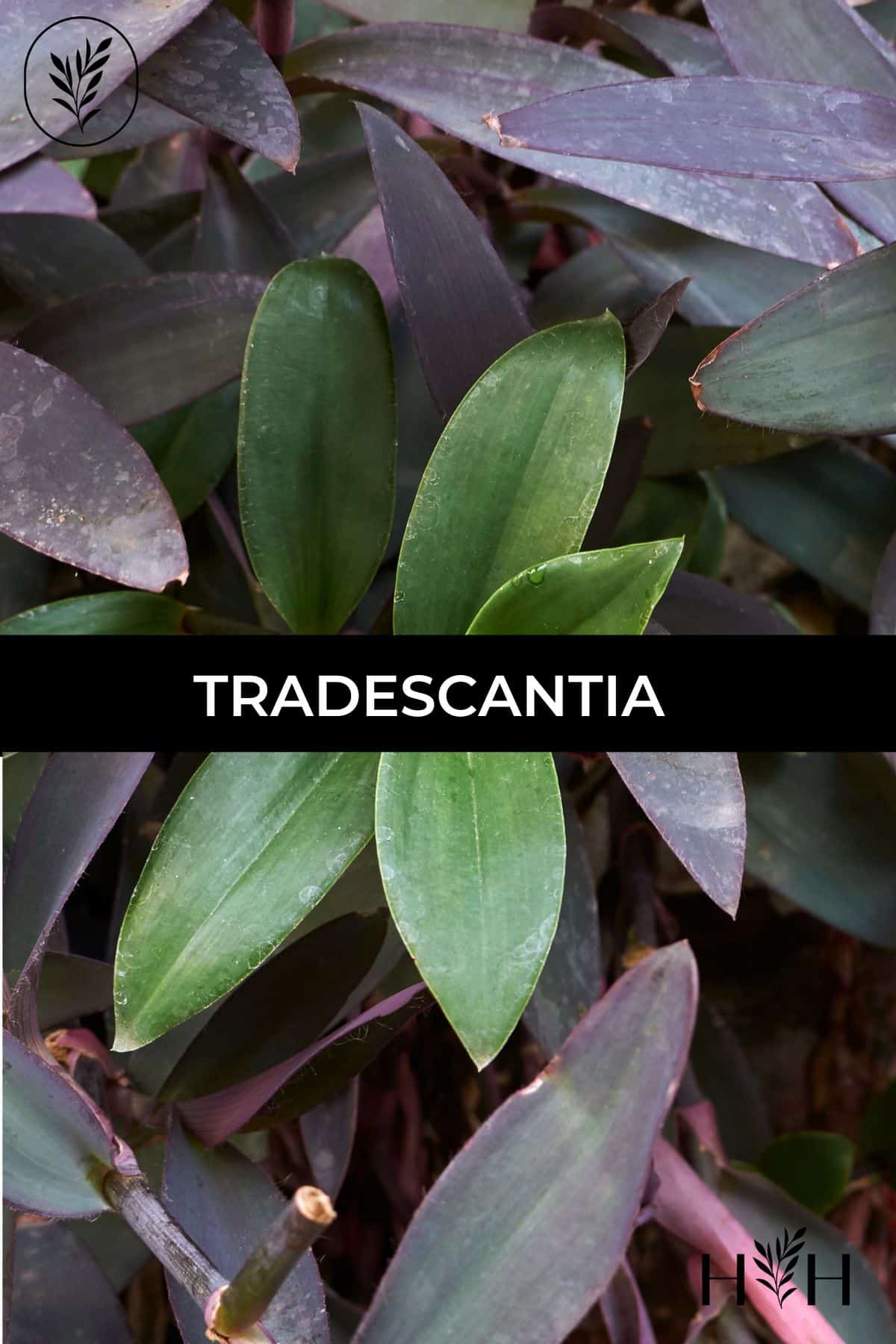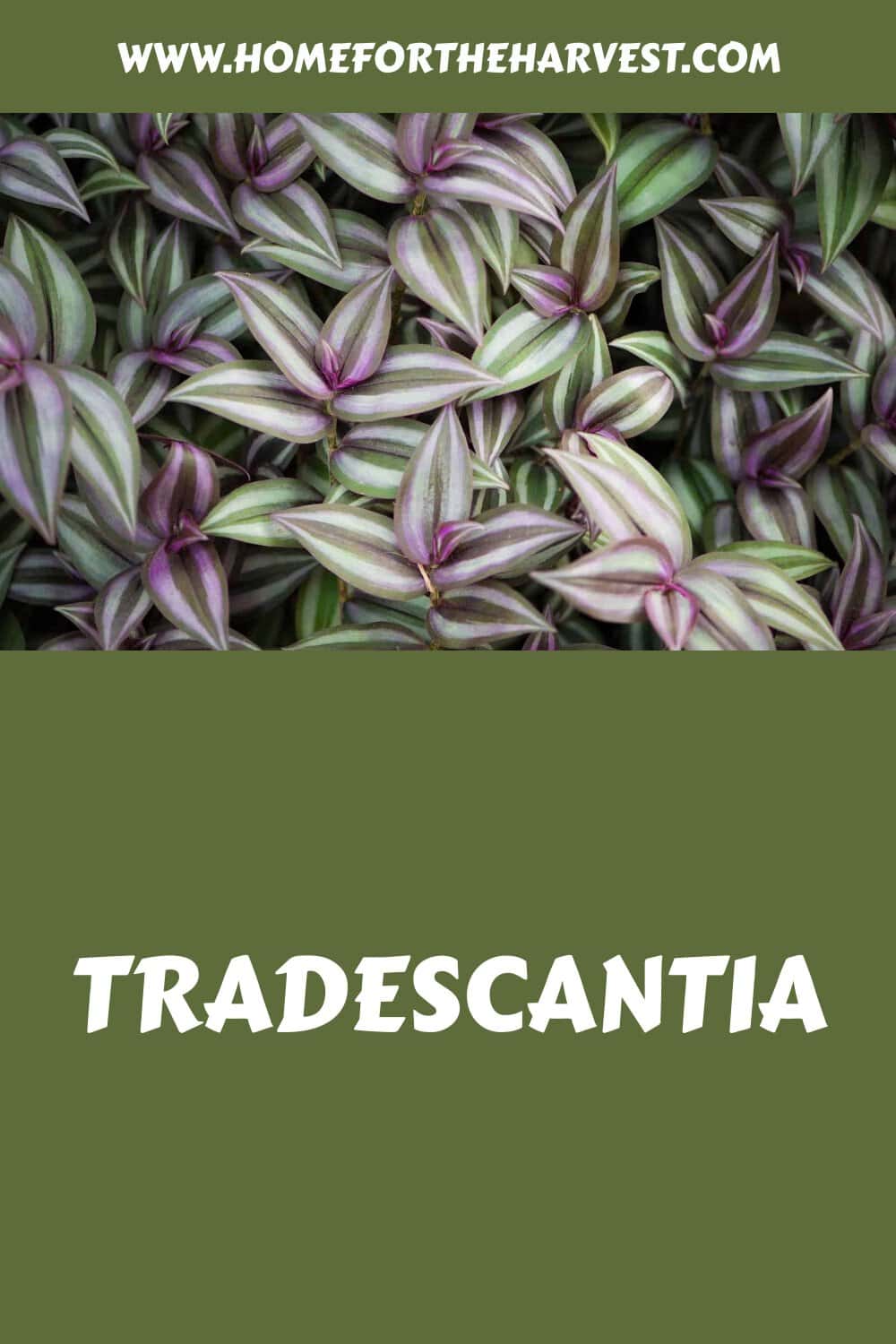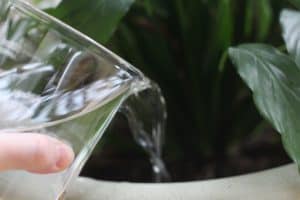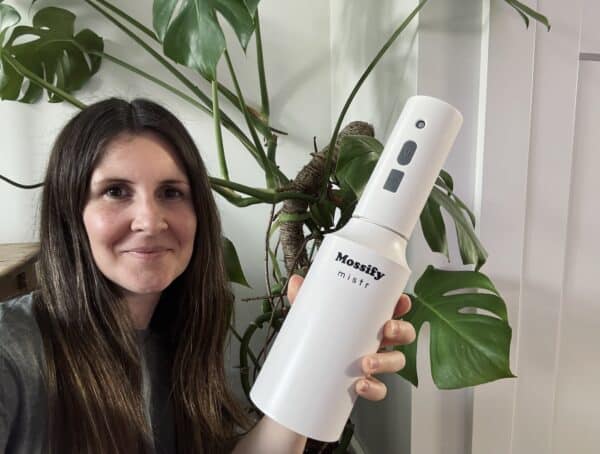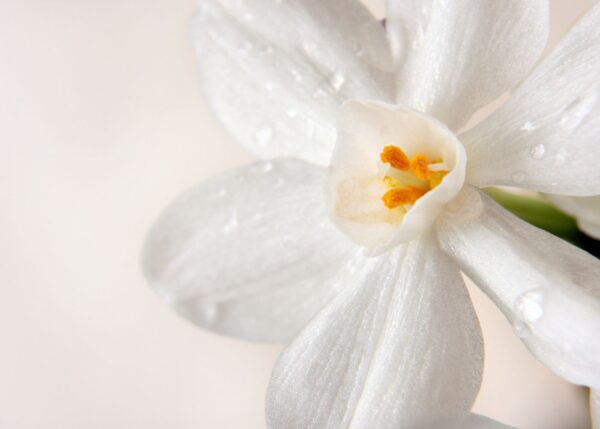Tradescantia is a genus of herbaceous perennial plants native to the Americas that are grown mainly for their ornamental foliage. While the Tradescantia genus includes several outdoor cottage garden perennials, the genus is most famous for the tropical Tradescantias (Inch Plants), which are extremely popular as indoor houseplants.
Tradescantia basics
Tradescantia plants are native to the Americas, ranging from Southern Canada to Northern Argentina. There are about 75 different species, each with a varying native area. Most types of Tradescantia cultivated as houseplants are native to Central and South America, including Tradescantia zebrina, Tradescantia fluminensis, Tradescantia pallida, and Tradescantia spathacea.
The different species of Tradescantia vary in appearance from one another. In general, they grow about 6-12 inches in height and have a width of 1 to 2 feet. Tradescantia plants grow fleshy oval or lance-shaped leaves that can be blue/green, gray/silver, or purple/burgundy, depending on the type. These plants produce small flowers that grow in oyster-like clusters, giving this plant its “Oyster Plant” nickname (particularly Tradescantia spathacea). The flowers produced by these plants are typically purple, white, or pink.
Tradescantia houseplants are commonly called “inch plants.” The inch plant nickname comes from the rate of how fast the plants can grow. They really do seem to grow an inch a day! There is also about an inch between each leaf, so the plants appear to grow an inch at a time.
Hardy species of Tradescantia are commonly referred to as Spiderwort plants. These cottage garden perennials are grown in partial shade areas of temperate outdoor garden beds. They are common at the front of border gardens where their small purple flowers peek out gracefully from the long strap-like leaves.
Tradescantia houseplant species
Here are some popular species of Tradescantia to grow in containers as houseplants:
- Tradescantia zebrina (Striped Inch Plant)
- Tradescantia pallida (Purple Inch Plant)
- Tradescantia fluminensis (Green Inch Plant)
- Tradescantia spathacea (Moses In The Cradle)
- Tradescantia sillamontana (White Velvet Inch Plant)
Tradescantia zebrina: These plants are named because of the zebra-like pattern on their leaves. They have two silver stripes on the outer edges and purple new growth on the central axis. The underneath of their leaves is a deep magenta. This plant is more commonly called “burgundy,” and it is available at most greenhouses. These are the most commonly known (and most commonly photographed) species.
Tradescantia pallida: This plant, also known as the “purple heart,” is characterized by its long, pointed, purple leaves. They grow small three-petaled flowers that are white, pink, or purple. These are common houseplants because of their pretty appearance, but also because they are known to improve air quality by filtering out pollutants and other organic compounds.
Tradescantia fluminensis: Also known as the Striped Inch Plant, this plant is characterized by its cream leaves with yellow striations.
Tradescantia spathacea: Also known as Moses In The Cradle, these Inch Plants have long narrow leaves. Many types have green leaves with purple undersides. Flowers are white.
Tradescantia sillamontana: This plant is also known as the White Velvet Inch Plant. This plant has leaves that are covered in wooly white hairs that give it a soft, velvety texture. These plants produce magenta-pink flowers during the summer.
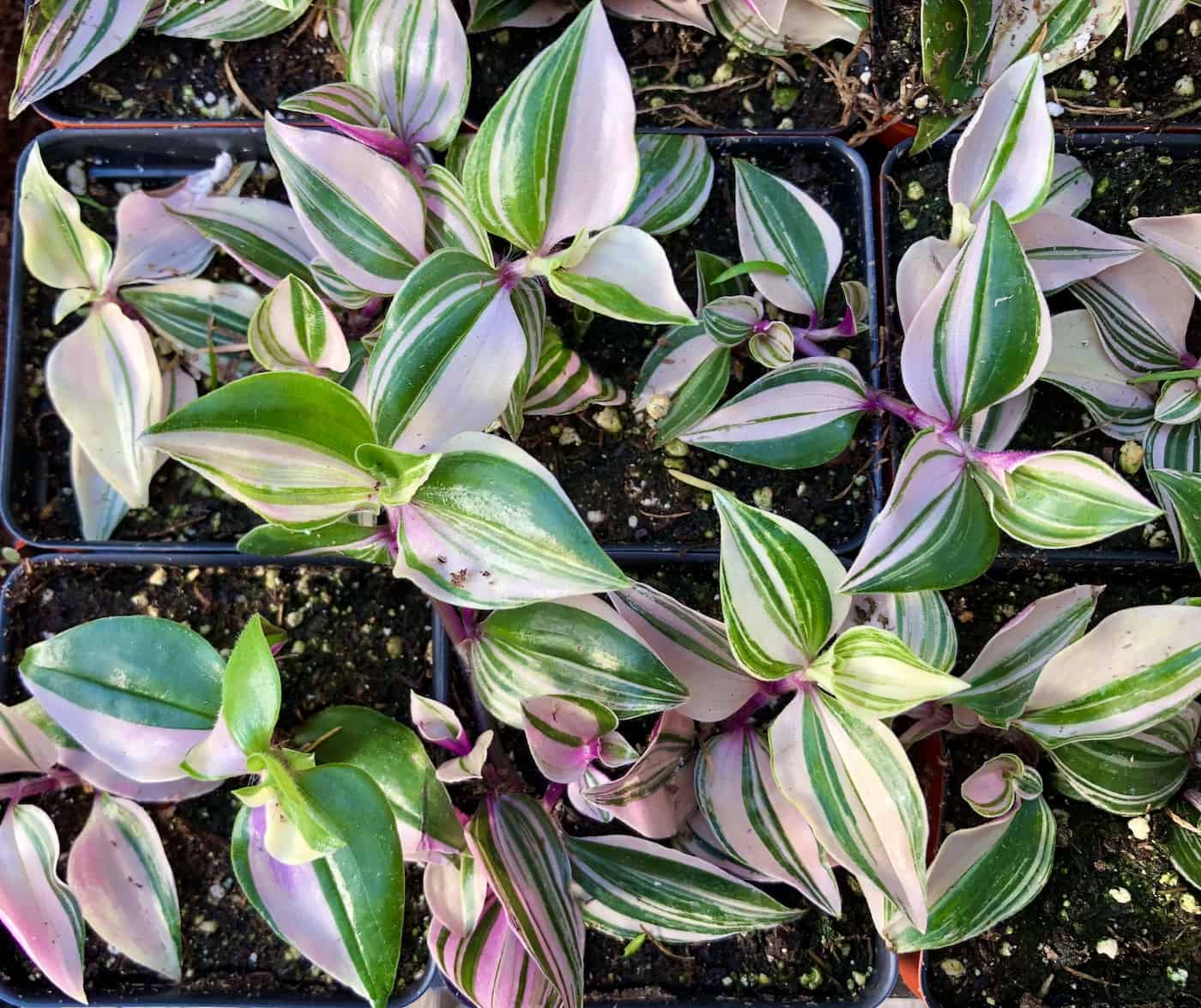
Tradescantia cultivars
Here are some popular names cultivars of Tradescantia to grow at home:
- Tradescantia Tricolor (Tradescantia spathacea ‘Tricolor’)
- Tradescantia Purple Heart (Tradescantia pallida ‘Purple Heart’)
- Tradescantia Baby Bunny Bellies (Tradescantia chrysophylla ‘Baby Bunny Bellies’)
- Tradescantia Nanouk (Tradescantia albiflora ‘Nanouk’)
- Tradescantia Pink Nanouk (Tradescantia albiflora ‘Pink Nanouk’)
- Tradescantia Albovittata (Tradescantia fluminensis ‘Albovittata’)
- Tradescantia Lilac (Tradescantia fluminensis ‘Lilac’)
- Tradescantia Variegata (Tradescantia fluminensis ‘Variegata’)
- Tradescantia Tricolor (Tradescantia fluminensis ‘Tricolor’)
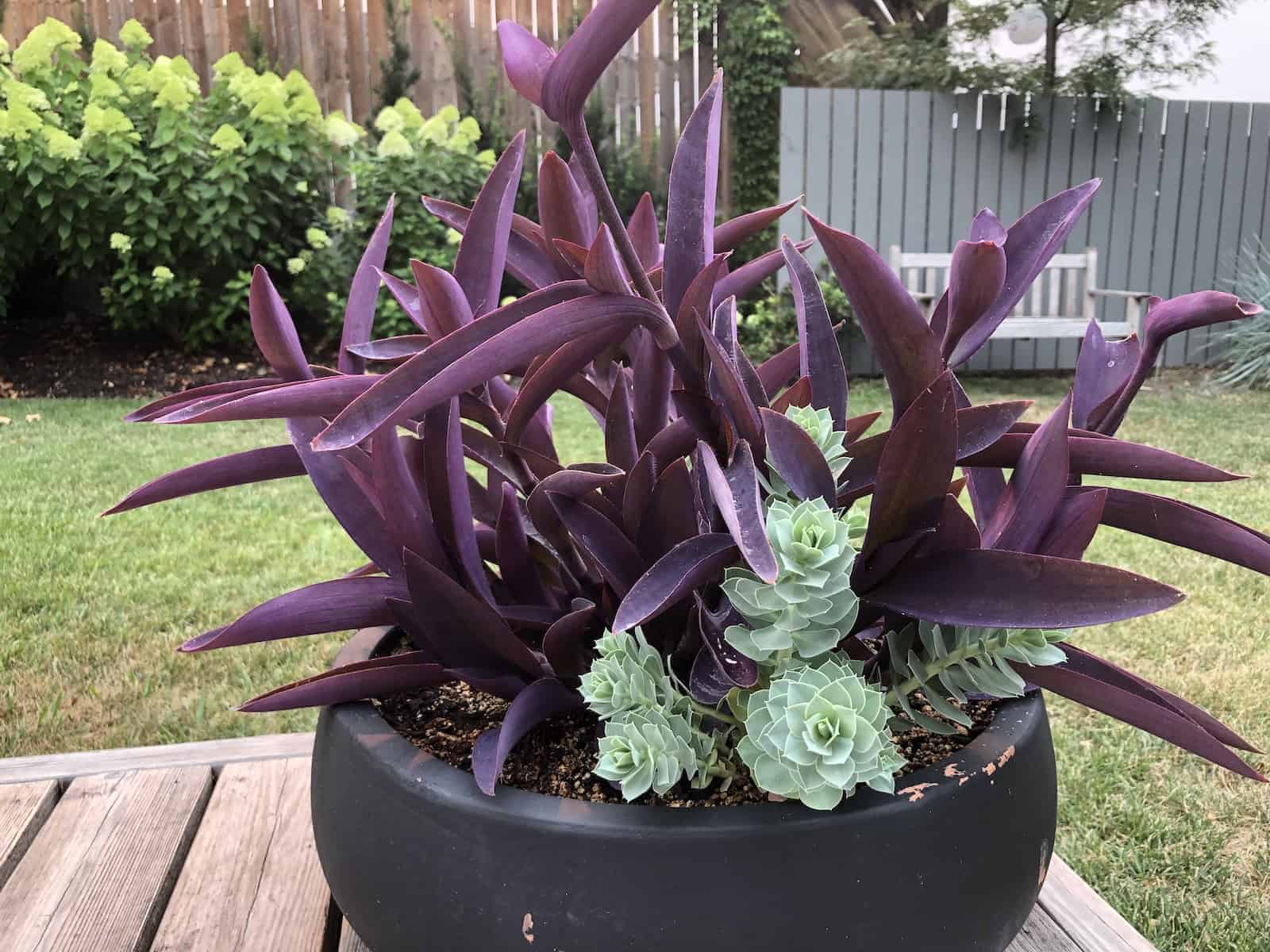
How to care for Tradescantia plants
Tradescantia plants are among the easiest houseplants to grow. These plants are not fussy and are a great choice for new plant parents and beginner indoor gardeners.
Watering Tradescantia plants
Water your Tradescantia once a week or as soon as the top half of the soil becomes dry. When you water your plant, you should wet it until the water runs out of the bottom of the pot. Tradescantias are susceptible to root rot, so it is important to ensure the planter is draining properly.
While it’s fine to get the foliage and stems wet once in a while, it’s best to water the soil surface directly. Moist foliage tends to invite fungal disease. Water droplets can also leave stains on the ornamental foliage of this plant. Use a watering can with a skinny spout to reach the soil surface without pouring water all over the leaves.
Best potting mix for Tradescantia
Tradescantias are not very picky about their soil and will grow in almost any kind of soil blend. However, these plants really like moisture, so the soil should not be too dry for too long. Use a potting mix that drains out excess moisture well but doesn’t try out too terribly quickly.
Lighting requirements
Tradescantias grow best in bright indirect light. If the plants do not get enough light, their beautiful leaf markings will begin to fade. Prolonged periods of low light can make the plant weak, limp, and susceptible to disease. Tradescantia grown indoors usually benefit from supplemental lighting from a little plant light.
However, if these plants have sudden exposure to direct sunlight after a period of darkness, their leaves can be scorched. Tradescantia plants can be grown in direct sunlight in cooler climates, especially if slowly exposed to slightly more and more sunlight each day until they become acclimatized.
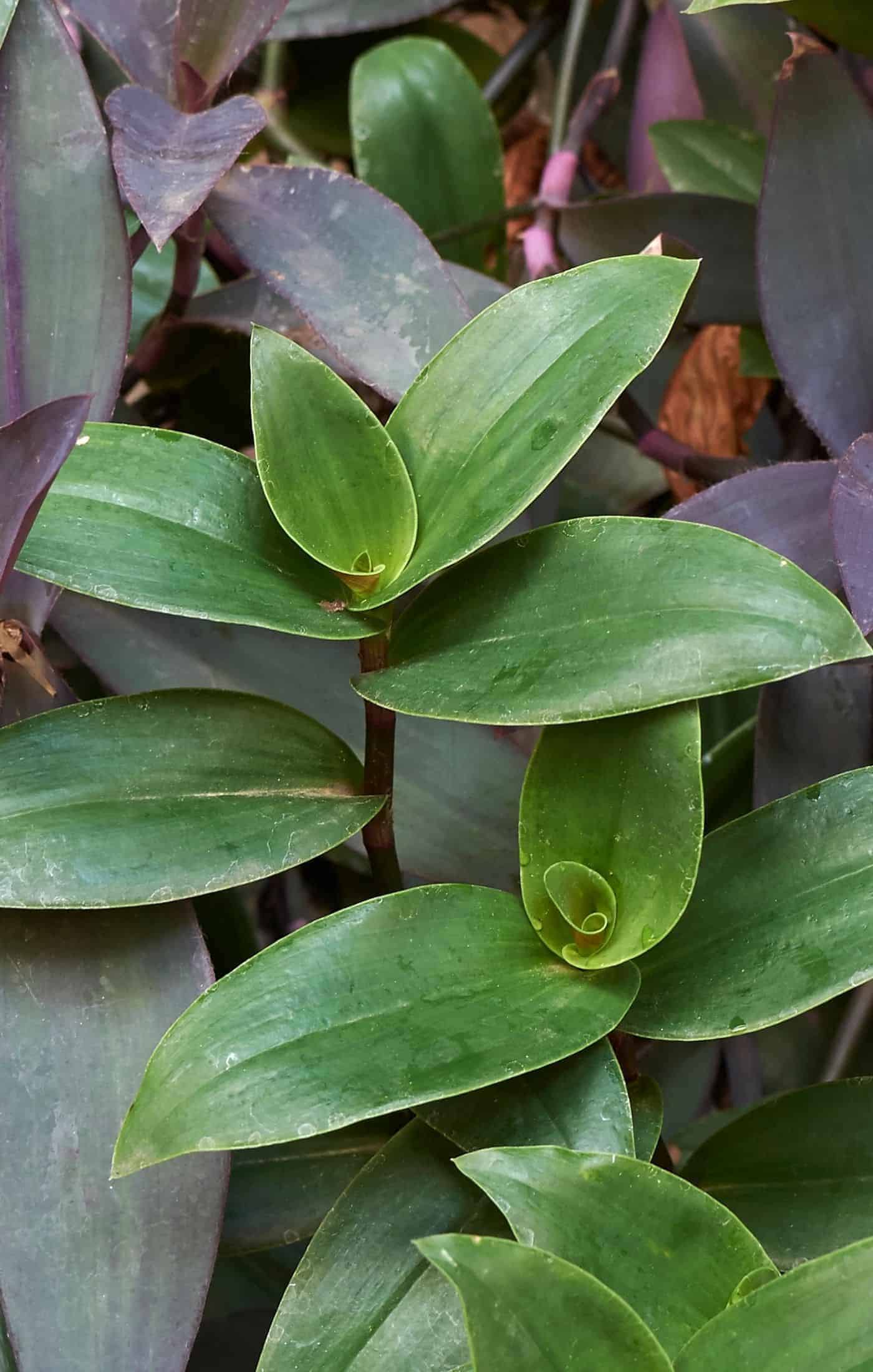
Temperature requirements for Tradescantia
Tradescantias do very well in most indoor settings. They thrive in temperatures between 65 and 75 degrees Fahrenheit, but they can tolerate and do well in hotter temperatures as well.
These plants should not be kept in areas where the temperature frequently gets below 50 degrees, or their leaves will become damaged and discolored. Temperatures below freezing can kill many types of Tradescantia plants (or at least kill any above-ground foliage).
Humidity levels for growing Tradescantia
Tradescantias love humidity and moisture. The best way to increase humidity levels for your plants is to use an area humidifier, as pebble trays and misting are not as effective over the long term.
Fertilizing Tradescantia houseplants
Although this is not necessary, fertilizing your Tradescantia can help it grow better. If you choose to fertilize, you should do so in the spring and summer in accordance with the directions on the fertilizer you purchase.
Pruning Tradescantia
Pruning is not necessary for the growth of this plant, but many like to prune their Tradescantias to keep up a busy, clean appearance. Remove dead or dying foliage with sharp, clean scissors.
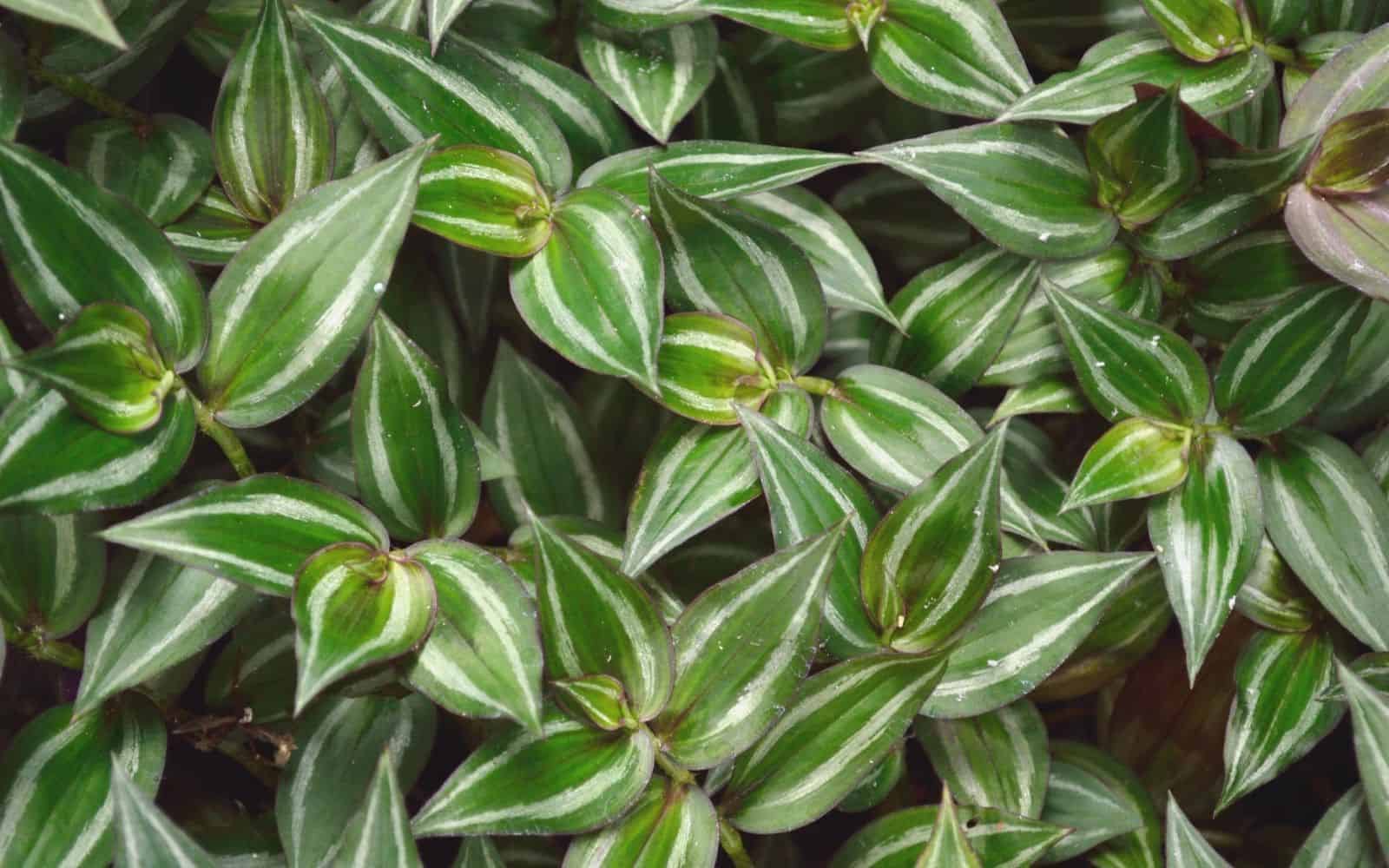
Repotting Tradescantia plants
Repotting can be a vital step for the health and growth of your Tradescantia. However, the process of re-potting can be super tricky. There are a few things that you need to take into consideration when re-potting your Tradescantia.
The best time to repot Tradescantia is during the spring, which is when they are coming out of winter dormancy and starting to actively grow. Repotting at the beginning of their growing season allows the roots to establish themselves in the new potting mix and planter pot.
Furthermore, you should keep in mind that just because your plant is growing, it does not mean that you need to automatically put it in a new pot. When your plant is growing, it is a good sign that it is thriving in its current environment. To know when you need to re-pot your plant, you should look for signs and clear indicators, such as roots poking out of the drainage holes and growth that is stalled or slowed down.
When changing containers, it is important to find a container that has drainage holes and can drain easily to prevent root rot. To get the correct size, you should select a pot or container that is about 1-2 inches bigger than the current pot, both in width and depth.
How to repot Tradescantia
Re-potting your plant is a careful process. Here are the steps to make re-potting smooth and successful:
- Water your Tradescantia: right before you move your Tradescantia, you want to drench it in water so that you will be able to separate the roots later without much difficulty. However, you should make sure that your plant is ready for more water, which may involve waiting a little bit longer to re-pot it.
- Gently remove the Tradescantia from its pot: for this step, it is a good idea to wear gloves because the Tradescantia roots can cause irritation. When you remove the plant from its pot, be extra careful not to break off any stems. It is suggested that you tip the pot onto its side horizontally to be able to pull the plant out more carefully.
- Break up the roots: if there are roots that are tangled or clustered together, you should gently break up the root clusters.
- Fill the new container with soil: you should fill the bottom of your pot with moist soil
- Add your Tradescantia to the pot: place your Tradescantia in the middle of the pot and cover it with soil.
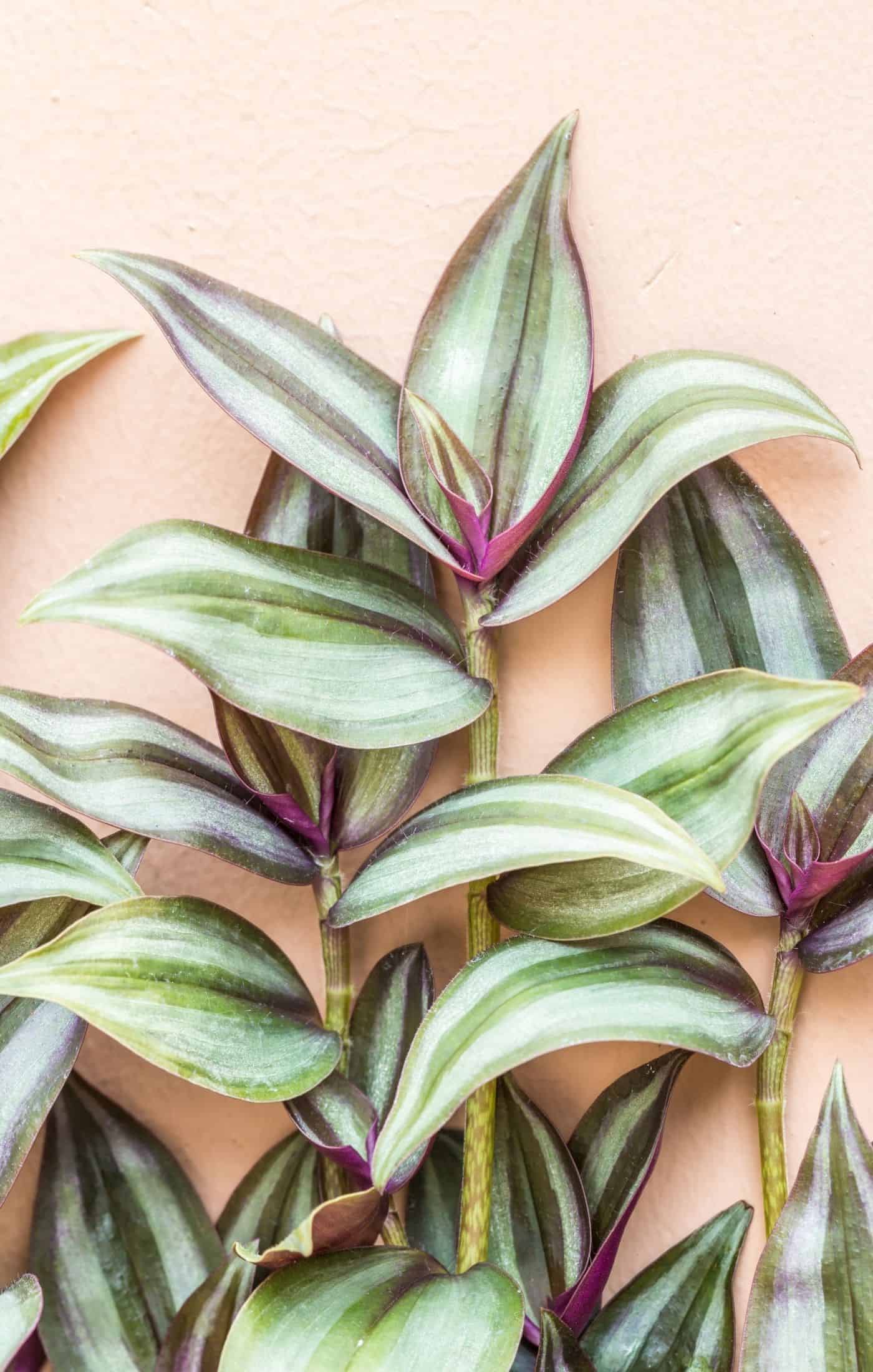
Propagating Tradescantia inch plants
Tradescantia plants are easily propagated. Many who grow these plants are known to give away several other plants from propagation because they cannot keep up with how fast the plants can grow and propagate.
Propagating a Tradescantia is relatively simple because the roots take easily from the cuttings of the plant. If you wish to propagate, make sure that your cutting is from a mature, healthy plant. Take sharp scissors and cut the stem just below the node where a leaf is beginning to grow. For best results, you should have a cutting of 4 to 6 inches.
You can propagate these plants in both water and soil. For propagating in water, you should fill a cup or a jar with water that is lukewarm. After pulling the leaves off the bottom part of the stem, place the cutting in the water and place it on a windowsill that gets lots of sunlight. However, you should avoid intense sunlight, such as from south-facing windowsills, which can damage the plants.
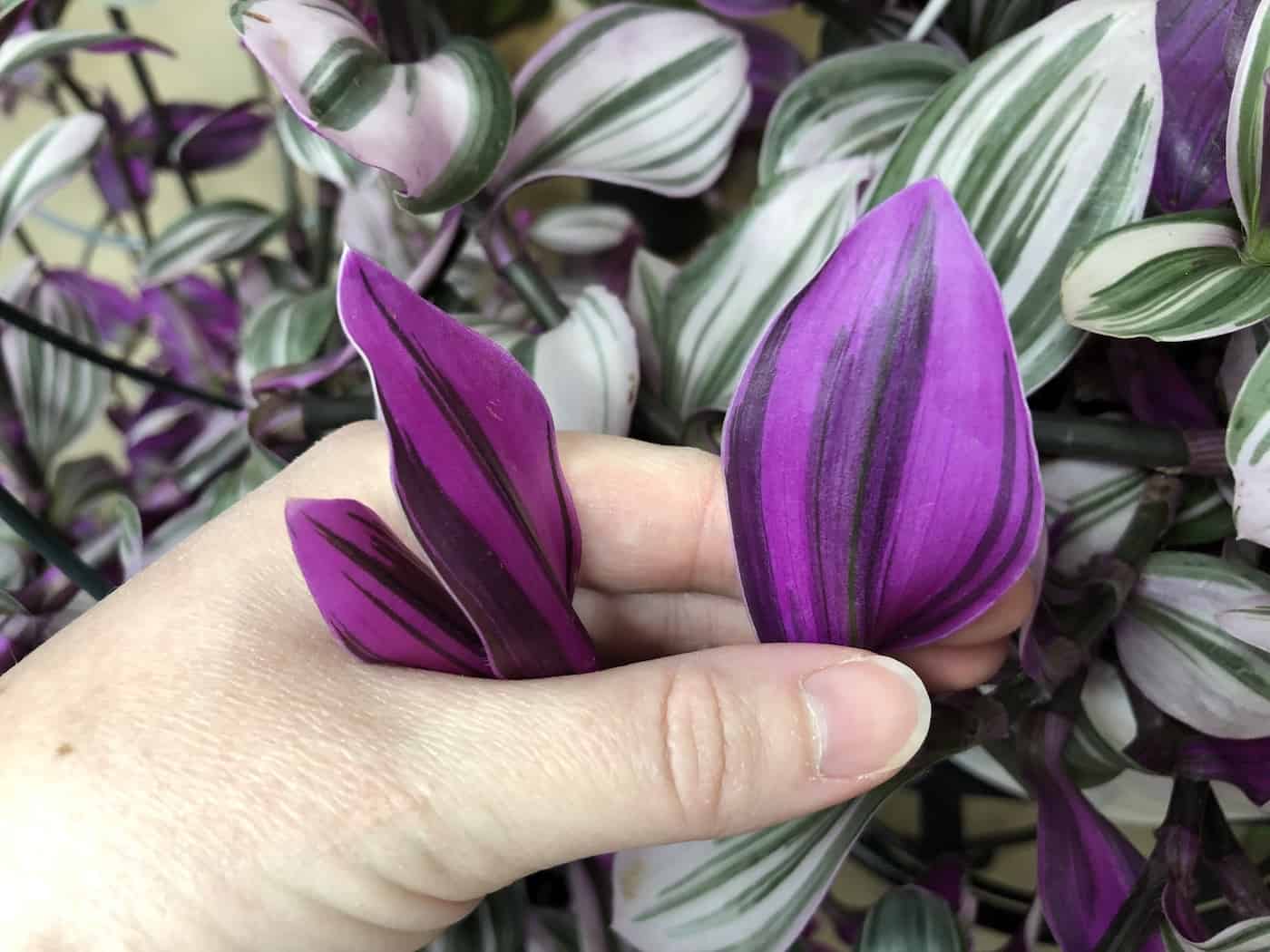
When propagating in water, make sure that the roots are always submerged. Once the roots are a few inches long (usually after 3-4 weeks), you can transfer it to a pot with soil.
If you are propagating with soil, the process is slightly different, and the process is more involved than propagating with soil. To propagate, you should first fill your container with soil, then remove the leaves from the bottom half of your stem. Then you should place your cuttings in the soil. You can place several cuttings in the same pot. After planting the cuttings, you should cover the pot with plastic (secured around the pot with a rubber band). This pot should be placed in bright but indirect light.
When new growth appears (usually after about a month), you can safely remove the plastic bag, and your plants will grow.
